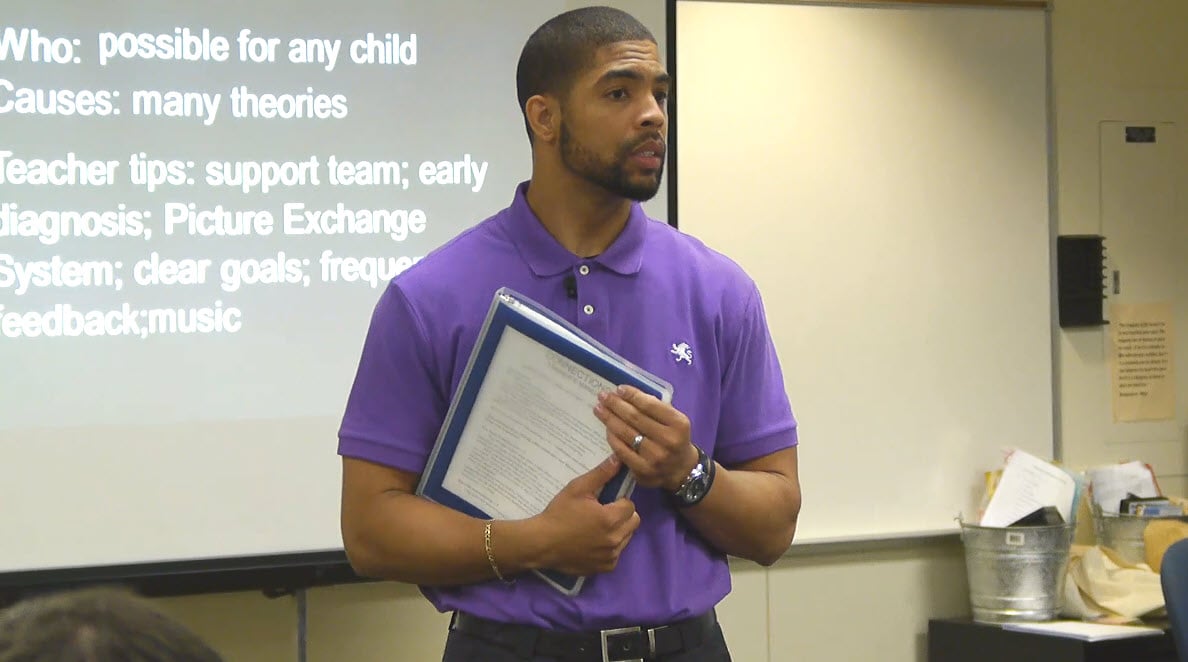



As a special education teacher, you are responsible for educating children who have individual special needs due to a wide range of disabilities.
While many of your responsibilities fall under general educator duties, several of your day-to-day tasks include modifications and accommodations specific to the field of special education.
To understand the full scope of the different special education teacher responsibilities, it’s helpful to begin with who these important educators serve.
Special education teachers work with students who have a variety of disabilities. While one student may receive special education services because of one disability, such as a speech delay, another student may have several disabilities that require a full team of specialists.
education services because of one disability, such as a speech delay, another student may have several disabilities that require a full team of specialists.
Special education educators often serve kids in multiple grade levels, though many typically work with either elementary students or secondary students at middle or high schools. However, in Texas, special education teachers are certified in grades EC (early childhood) through 12.
While every child is unique, the Individuals with Disabilities Education Act breaks disabilities into 13 categories:
It’s important to note that some of the disabilities above are divided into separate categories when they may otherwise be linked together. For example, deafness and hearing impairment have their own categories since they require very different interventions for children with disabilities in a special education classroom.
The primary role of a special education teacher is to work with students who have learning, mental, emotional or physical disabilities. This type of specialized teacher takes general education lessons and adapts them to meet students’ needs.
A special education teacher often teaches these lessons to students who have mild to moderate disabilities, but also may teach basic skills to students with more severe disabilities. Special education teachers are found in both public schools and private schools.
While your responsibilities may place you in a general education classroom working side-by-side with a classroom teacher, you may also have your own classroom that has a lower teacher-to-student ratio. Your responsibilities may also entail tutoring special needs students privately.
Another main responsibility of a special education teacher is to develop and implement a student’s individualized education program, or IEP. This is a legal document that helps determine the exact mix of general and specialized education a student should receive.
You will work with a committee of educators, social workers and other experts, along with the student’s parents, to draft the IEP and update it throughout the year based on the student’s progress. To create and maintain an IEP, you will need to perform routine assessments of a child’s skills, both academically and socially.
In addition to creating and maintaining IEPs, other unique responsibilities of a special education teacher include:
In addition to some of the unique special education teacher responsibilities outlined above, educators who work with special education students often have some of the same duties that most teachers have in the classroom.
special education students often have some of the same duties that most teachers have in the classroom.
These responsibilities include:
To renew a teaching credential in Texas, you also have the responsibility of meeting continuing professional education (CPE) requirements. Examples of continuing education activities should be related to your special education certificate that is being renewed and can include professional development activities like workshops, conferences and in-service or staff development given by an approved registered provider.
If you’re considering becoming a special education teacher, it’s important to ACT NOW. In Texas, testing requirements are constantly changing, and in just a year or two it could become significantly more time-consuming and complicated to earn your Texas teacher certification.
A popular option for those who have already earned their bachelor’s degree and want to change careers is enrolling in an alternative teacher certification program. This type of Educator Preparation Program (EPP) offers you a path toward state-issued certification by enrolling in online or in-person courses or a combination of both.
Once enrolled in a teacher certification program, you will:
Working with a quality teacher preparation program that treats you as an individual and not just a number is key to having a successful journey and completing your teacher certification in a timely manner. Our article, Best Online School For Teaching Credential: 5 Program Musts, outlines what you should look for in a top program so that you can rest assured your teaching future is in good hands.
Topics: Teaching Jobs
Scott is the Deputy Executive Director and Program Consultant. Scott earned a Bachelor of Science in Human Biology from Texas Woman's University and a Master of Education from Texas Woman's University. Scott has extensive experience in both the classroom and as an administrator in districts in North Texas.
7166 Baker Blvd., Suite B · Richland Hills, Texas 76118
Phone 817-284-7731 | Fax 817-284-3396
Login | Make Payment | ECAP Handbook | Privacy Policy | Pricing
YOUR COMMENTS